7+ Sample Interior Designer Contracts
-
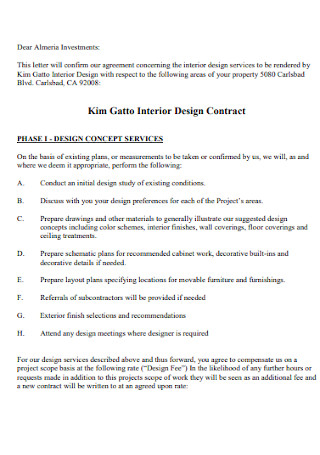
Interior Design Contract Format
download now -
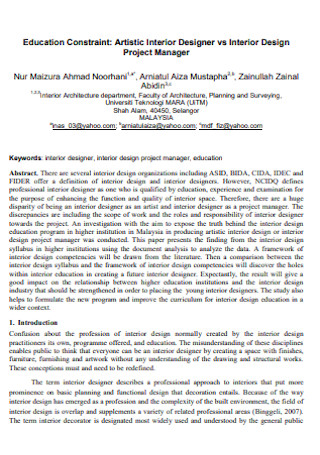
Artist Interior Designer Contract
download now -
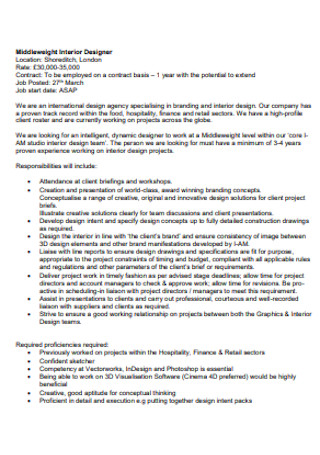
Middleweight Interior Designer Contract
download now -

Interior Designer and Decorating Contract
download now -
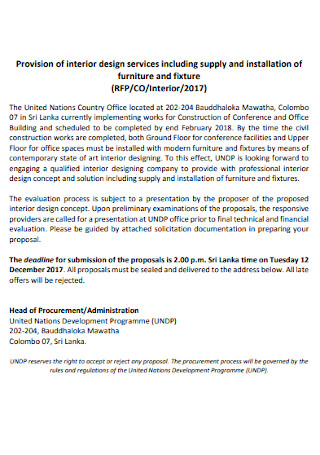
Interior Design Services Contract
download now -
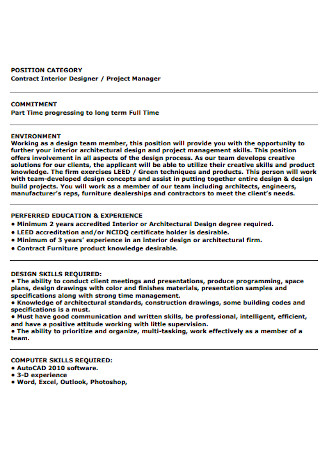
Basic Interior Designer Contract
download now -

Work for Interior Designer Contract
download now
FREE Interior Designer Contract s to Download
7+ Sample Interior Designer Contracts
What Is an Interior Designer Contract?
Components of an Interior Designer Contract
How to Construct an Interior Designer Contract
FAQs
What are key decor elements that elevate the ambiance of a room?
What is the difference between an interior designer and an architect?
Why must you hire a professional interior designer?
The best bet is to seek the help of an interior designer and engage in a contract with them to have the expression come to life. In the article below, information about the definition, construction, and components of an interior designer contract is available. Learn more about them and ensure that your personal living space captures the essence of how you want it to be.
What Is an Interior Designer Contract?
An interior designer contract is a legal document between an interior designer and their client, stating the terms of the relationship. Professionals from the globe emphasize the relevance of writing a contract that embarks on an interior design project. The reason is to obtain a legal agreement and review its content thoroughly. The designer contract contains several stipulations about the project plan. It lays out the scope of the design project, the duties and responsibilities of the interior designer, and deadlines set for the various steps of the project. The contract must also discuss professional fees, payment methods, estimates, and even additional fees along the plan’s timeline. Both parties must reach an agreement before signing the contract. Once it has signatories, the client and designer agree to all terms and conditions according to the interior designer contract.
Based on the Occupational Employment and Wage Statistics by the United States Bureau of Labor Statistics dated May of 2020, employment numbers of interior designers, minus the self-employed individuals, account for 59,170 of the workforce in the United States. About 20,880 of these individuals with occupation under the specialized design services.
Components of an Interior Designer Contract
Plenty of interior designers maintain a customary contract because it is quickly adjustable and editable to fit minor jobs. The customization of the agreement can also happen based on the project and with the help of a professional lawyer, especially in the case of major projects of completing interior designs for large companies and organizations. It is necessary to tailor the contract to the size of the project. The fundamental elements of the designer contract are as follows:
How to Construct an Interior Designer Contract
Similar to all contracts, it is necessary to detail information that helps parties understand the agreement clearly. Well-written interior designer contracts reduce misunderstandings and problems resulting from unclear information. If a first-time designer creates a contract, it is advisable to consult with a lawyer before the process. Here are steps to take in constructing an interior designer contract.
Step 1: Indicate Basic Information in the Contract
After securing the client, the details of both parties must reflect on the document. Information includes both parties’ full names, addresses, dates of birth, and ages. The interior designer must indicate their license number in the contract to certify they are qualified to do the project. The contractor writes down any additional information that helps the client understand the processes once the contract starts.
Step 2: Conceptual Planning With the Client
During this step, the designer meets up with the client to help define the client’s needs, objectives, and expectations. It enables the parties to arrive at a well-defined and feasible action plan for the project. The designer consults with the client to achieve an understanding of needs and expectations and assists in preparing a potential budget plan. The client must also specify the dimensions of the space, allowing the designer to create proper allocations and utilize all available areas. It is also necessary to discuss the sketches to develop floor plans, sections, and elevations. During the meetings, the client must allow the designer to inspect the space to account for necessary furnishings, fixtures, and furniture. Discuss interior furnishings, lightings, color schemes, fabrics, and other essential items to complete the project.
Step 3: Develop a Design Following a Client’s Vision
The designer starts to develop concrete plans and drawings based on the client’s vision and feedback. The designer keeps in mind details about payments, revisions, ownership, final budgets, and essential clauses and statements. It is also during this stage that consultants and other contractors come into the picture. It is necessary to define the specific roles and responsibilities and if they overlap and affect each other. Both parties also must discuss purchase agreements, shipping, delivery, and even customization and personalization of specific furniture. Indicate both parties’ signatures to solidify the contract.
Step 4: Finalize Essential Components of the Contract
Once all agreements between parties and all necessary equipment or merchandise are available, the contract guarantees the designer’s full cooperation and assistance to facilitate the continuous progress of the design project. The designer helps the client land the best deals, prices, and bids for the furnishings and furniture for the designated space. The contractor also assists with supervising installations and placements and finalizing the effectiveness of the contract by providing a simple checklist of items and areas that need immediate attention.
FAQs
What are key decor elements that elevate the ambiance of a room?
Most clients would want to recycle and keep their previous furniture, and that is understandable. You can just add a few items around the area to brighten it, making the space more polished and composed. A couple of accessories does the job and makes a home feel more like home. Plants are one of the most common items essential in a home that adds life and color to any room. A few plants strategically placed throughout the house make a place feel lighter and guests more welcome. If you love to travel, it is a good idea to add curated pieces of furniture from travel trips, incorporating them into your space. These items help tell a story about the individual living there. It helps spark curiosity and is a great conversation starter just by its presence. Quite unusual, but books are excellent pieces to include in the design of your home to infuse color in a room. Aside from that, the options are endless. You can use a diverse selection of books, from beautiful jacketed and bound books, decor books, and travel books from all over the world. It helps incorporate the individual’s personality into the room.
What is the difference between an interior designer and an architect?
An interior designer’s responsibility is to create a client’s desired appearance, feel, and ambiance within a building. Meanwhile, an architect designs and delivers an entire structure. In terms of expertise, an architect builds a house following guidelines while ensuring its functionality, whereas an interior designer is responsible for an appealing and beautiful interior suitable for the client. Architects focus on technical aspects, including the form, direction, and materials of the building. Meanwhile, an interior designer focuses on the client’s visions and desires, focusing on the functionality and aesthetics of the space. You must hire an architect if it involves an empty plot, building construction, and heavy renovations. On the other hand, an interior designer works with a blank canvas in the form of undecorated rooms and spaces. Most of the time, the two professions work hand in hand to create a functional and attractive building for a client.
Why must you hire a professional interior designer?
Hiring an interior designer helps avoid expensive mistakes, save money, and increase home value. They give professional assessments based on the client’s situation, leading to a solid plan to determine which items need refurbishment and replacement. Most designers know places to buy objects and materials that save the customer from time-consuming research and money from overpriced items and brands. Aside from vendors, designers have reliable connections for home improvement needs like plumbers, electricians, and contractors. Interior designers have keen eyes for what works and what doesn’t. It is an advantage to have them when making aesthetic decisions from their years of experience. Lastly, interior designers are visual storytellers. They enhance the space and quality of an individual’s living space.
Interior design brings out an individual’s personality through the personal space they occupy. It allows them to showcase and tell people their stories, sharing their passions and visions in life. Interior designers highlight people’s ideas and turn them into concrete and pleasant realities. It is essential to seek the aid of interior designers to ensure that an individual saves time and money. In the words of Tyra Banks, “Never dull your shine for somebody else.” A person’s personality and expression shine through in everything they do and the things that give them comfort. In their homes, they find bliss and satisfaction, and interior designers help them reach this goal. Find interior designer contract samples in the above article and start expressing yourself through your personal space.
